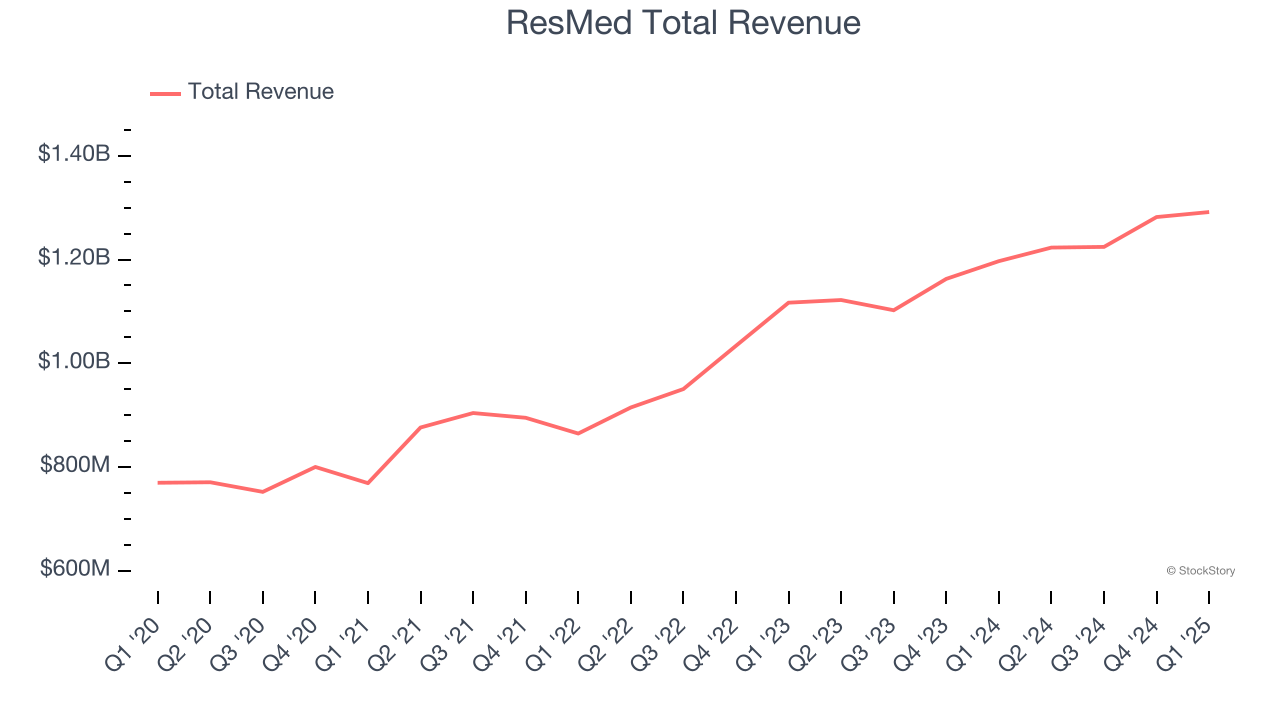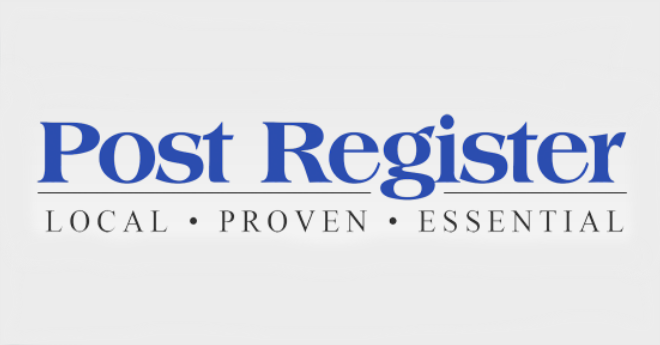
Quarterly earnings results are a good time to check in on a company’s progress, especially compared to its peers in the same sector. Today we are looking at ResMed (NYSE: RMD) and the best and worst performers in the patient monitoring industry.
Patient monitoring companies within the healthcare equipment industry offer devices and technologies that track chronic conditions and support real-time health management, such as continuous glucose monitors (CGMs) and sleep apnea machines. These businesses benefit from recurring revenue from consumables and software subscriptions tied to device sales (razor, razor blade model). The rising prevalence of chronic diseases like diabetes and respiratory disorders due to an aging population as well as growing adoption of digitization are good for the industry. However, these companies face challenges from high R&D costs and reliance on regulatory approvals. Looking ahead, the sector is positioned for growth due to tailwinds like the rising burden of chronic diseases from an aging population, the shift toward value-based care, and increased adoption of digital health solutions. Innovations in AI and machine learning are expected to enhance device accuracy and functionality, improving patient outcomes and driving demand. However, there are headwinds such as pricing pressures as healthcare costs are a key focus, especially in the US. An evolving regulatory landscape and competition from more tech-forward new entrants could present additional challenges.
The 5 patient monitoring stocks we track reported a strong Q1. As a group, revenues beat analysts’ consensus estimates by 2.2% while next quarter’s revenue guidance was 0.9% below.
Luckily, patient monitoring stocks have performed well with share prices up 17.3% on average since the latest earnings results.
ResMed (NYSE: RMD)
Founded in 1989 to address the then-underdiagnosed condition of sleep apnea, ResMed (NYSE: RMD) develops cloud-connected medical devices and software solutions that treat sleep apnea, COPD, and other respiratory disorders for home and clinical use.
ResMed reported revenues of $1.29 billion, up 7.9% year on year. This print was in line with analysts’ expectations, but overall, it was a mixed quarter for the company with EPS and constant currency revenue in line with analysts’ estimates.
“Our positive fiscal year 2025 performance continued in the third quarter, with strong top-line revenue growth, margin expansion, and double-digit EPS growth resulting from solid customer demand for our best-in-class products and software solutions,” said Resmed’s Chairman and CEO, Mick Farrell.

ResMed delivered the weakest performance against analyst estimates and slowest revenue growth of the whole group. Interestingly, the stock is up 15.2% since reporting and currently trades at $246.99.
Is now the time to buy ResMed? Access our full analysis of the earnings results here, it’s free.
Best Q1: Insulet (NASDAQ: PODD)
Revolutionizing diabetes care with its tubeless "Pod" technology, Insulet (NASDAQ: PODD) develops and manufactures innovative insulin delivery systems for people with diabetes, primarily through its Omnipod product line.
Insulet reported revenues of $569 million, up 28.8% year on year, outperforming analysts’ expectations by 4.8%. The business had an exceptional quarter with a solid beat of analysts’ constant currency revenue and EPS estimates.

Insulet delivered the biggest analyst estimates beat and fastest revenue growth among its peers. The market seems happy with the results as the stock is up 25.3% since reporting. It currently trades at $322.
Is now the time to buy Insulet? Access our full analysis of the earnings results here, it’s free.
Weakest Q1: Masimo (NASDAQ: MASI)
Founded in 1989 to solve the "unsolvable problem" of accurate pulse oximetry during patient movement, Masimo (NASDAQ: MASI) develops and manufactures noninvasive patient monitoring technologies, including its breakthrough pulse oximetry systems that accurately measure blood oxygen levels even during patient movement.
Masimo reported revenues of $372 million, up 9.5% year on year, exceeding analysts’ expectations by 1.1%. Still, it was a mixed quarter as it posted a significant miss of analysts’ full-year EPS guidance estimates.
Masimo delivered the weakest full-year guidance update in the group. As expected, the stock is down 3.5% since the results and currently trades at $155.
Read our full analysis of Masimo’s results here.
iRhythm (NASDAQ: IRTC)
Pioneering the shift from bulky, short-term heart monitors to sleek, wire-free patches, iRhythm Technologies (NASDAQ: IRTC) provides wearable cardiac monitoring devices and AI-powered analysis services that help physicians detect and diagnose heart rhythm disorders.
iRhythm reported revenues of $158.7 million, up 20.3% year on year. This print surpassed analysts’ expectations by 3.3%. It was a strong quarter as it also logged full-year revenue guidance beating analysts’ expectations.
iRhythm pulled off the highest full-year guidance raise among its peers. The stock is up 27% since reporting and currently trades at $138.38.
Read our full, actionable report on iRhythm here, it’s free.
DexCom (NASDAQ: DXCM)
Founded in 1999 and receiving its first FDA approval in 2006, DexCom (NASDAQ: DXCM) develops and sells continuous glucose monitoring systems that allow people with diabetes to track their blood sugar levels without repeated finger pricks.
DexCom reported revenues of $1.04 billion, up 12.5% year on year. This result beat analysts’ expectations by 1.8%. Taking a step back, it was a satisfactory quarter as it also produced a solid beat of analysts’ organic revenue estimates but a miss of analysts’ EPS estimates.
The stock is up 22.3% since reporting and currently trades at $85.95.
Read our full, actionable report on DexCom here, it’s free.
Market Update
In response to the Fed’s rate hikes in 2022 and 2023, inflation has been gradually trending down from its post-pandemic peak, trending closer to the Fed’s 2% target. Despite higher borrowing costs, the economy has avoided flashing recessionary signals. This is the much-desired soft landing that many investors hoped for. The recent rate cuts (0.5% in September and 0.25% in November 2024) have bolstered the stock market, making 2024 a strong year for equities. Donald Trump’s presidential win in November sparked additional market gains, sending indices to record highs in the days following his victory. However, debates continue over possible tariffs and corporate tax adjustments, raising questions about economic stability in 2025.
Want to invest in winners with rock-solid fundamentals? Check out our Top 5 Growth Stocks and add them to your watchlist. These companies are poised for growth regardless of the political or macroeconomic climate.
Join Paid Stock Investor Research
Help us make StockStory more helpful to investors like yourself. Join our paid user research session and receive a $50 Amazon gift card for your opinions. Sign up here.








